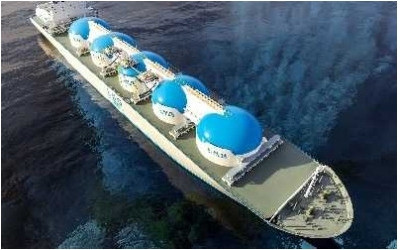April 18, 2014

There can be no doubt that the UK North Sea will remain an important region for oil and gas for years to come. Most of its fields are expected to remain economically viable until 2020 at the earliest, and high oil prices have given a boost to exploration in the North East Atlantic basin in areas previously considered marginal and thereby uneconomic. The region still boasts estimated oil and gas reserves of 9.4billion boe with a 50% plus chance of recoverability…
Despite this, UK drilling activity is in decline, and nowhere near the levels necessary to unlock the area’s remaining potential. Production drilling has remained constant at about 120-130 wells/yr since 2009, but remains well below pre-2009 levels. More worryingly, the last three years have seen the lowest rate of exploration activity in the region’s history. 2013 saw 44 exploration and appraisal wells drilled, below initial forecasts, and down from 53 in 2012. This year may see a lower level of activity still, with plans to drill just 25 exploration wells and 11 appraisal wells. Around 66 further exploration and appraisal wells are expected to be drilled through 2015 and 2016, suggesting that the yearly rate is not expected to rise significantly.
This is not just a concern for the industry, but the entire country. UK offshore oil and gas continues to be the country’s largest industrial investor, paying more tax to the Exchequer than any other corporate sector. North Sea oil and gas supports around 450,000 jobs across the country and contributes to around 1.5% of national GDP. Without domestic production, we would have had to import an extra $US52 billion worth of energy in 2012. But we can only produce as much as we drill – ultimately, the stakes could not be higher.
So what are the factors behind this dip in activity, and what obstacles do drilling companies in the North Sea face? Much of the issue comes down to the sector’s inherent volatility. Drilling companies largely operate on a project-by-project basis, the availability and location of which are highly sensitive to moveable factors such as the prices of oil and gas, the emergence of new technology and new discoveries. Opportunities can arise with little forward notice, leaving companies scrambling to ready themselves to take advantage. On the other hand, a dip in prices can lead to prolonged periods of reduced or low activity. For drilling companies this volatility manifests itself in three major ways: access to rigs, access to financial capital, and access to human capital.
No money, no rigs
Demand for rigs, and their lack of availability during periods of high activity, is a major challenge facing North Sea exploration drilling. Of the 55-60 exploration and appraisal wells forecast to be drilled last year, 20 were postponed and four cancelled. 42% of these postponements/cancellations were down to a lack of rig availability. Another 8% involved cases where the company had in fact secured a firm rig slot to drill, but delays on other drilling sitesended up preventing use.
The number of mobile rigs deployed in the UK at the end of 2013 was the highest since 2008 (20 jackup and 19 semisubmersible rigs respectively) – however relative to the region’s potential this still very much represents a shortfall. Current high rig rates (combined with the fact that the average drilling period has risen to 17 days) only increase the strain. A lack of access to funding was also a significant constraint on exploration in 2013, accounting for a further quarter of the postponements and cancellations. As one might expect, this factor hit smaller drilling companies disproportionately hard relative to their larger, more resilient counterparts. As a result, small to medium sized companies contributed just 25% of wells in 2013, a lower share than in previous years (partly offset by increased activity on the part of energy utilities during the same period).
The people problem
Another major manifestation of volatility – though more subtle than the above two – are the difficulties inherent in getting the right people with the right technical skills to the right place for the right duration, often at short notice. To some extent this challenge is common to drilling companies across the world: the global oil and gas industry faces an acute skills shortage of workers with 10-15 years of experience, thanks to a near universal shut-down of training and recruitment programmes during the 80s oil gut, when prices hit record lows.
However there are additional issues particular to the North Sea region that exacerbate the challenge. Firstly, competition with other regions around the world – in an industry already short on human capital – makes it especially difficult to retain talent. Drilling personnel working abroad might typically command salaries 35-50% higher than equivalent North Sea-based personnel and the difference becomes marked when one includes taxes and bonuses.
And it’s not merely a matter of pay. It’s also a matter of job satisfaction and the opportunity to work with cutting-edge technology. The North Sea is of course, a very mature, developed region, filled with aging ‘rust-buckets’ and manually-operated drilling rigs built on older technology. These do the job, but other newer regions tend to have a higher proportion of newer generation rigs. At the very cutting-edge this includes ‘cyber rigs’ – high automated drilling rigs
where instead of roustabouts and rough-necks rushing about switching pipes you are more likely to see staff in comfy chairs, pushing buttons and monitoring proceedings via highly sophisticated computerised control systems. Many newer generation mobile rigs boast far better conditions for workers, and come replete with a host of extra facilities designed to improve the living standards of those posted there.
Logistical acrobatics
Rig availability is largely a matter of supply and demand beyond the immediate control of drilling companies, as are the factors that dictate the availability of financial capital. Therefore drilling companies have limited options when it comes to mitigating the impact of volatility in these areas. When it comes to the impact of volatility on human capital, however, there is more that can be done.
We are increasingly seeing companies engage in ‘logistical acrobatics’ to minimize the people problem. Employers will incentivise workers to remain offshore instead of departing for leave, or work extra shifts. The ‘quasi-demotion/promotion’ is another weapon in the arsenal: e.g. an assistant driller might be promoted to a driller on a strategic per-project basis, and similarly a tool-pusher might be ‘demoted’ to driller in order to fill an urgent gap, while remaining on the higher tool-pusher rate of pay.
In the same vein, some companies in the UK North Sea are reorganizing shift rotations in order to make hours more appealing to prospective workers. ‘Roving trips’ are increasingly common, as they can afford candidates a chance to travel and get out onto different rigs. Another trick increasingly on the uptake (at least within larger organizations that have the capacity) is to identify when your international workers will be home, and use them at this point. For instance, say you have someone working on a 28 days on/28 days off rotation in Angola; that contractor may be amenable to doing a two week shift in the North Sea whilst he is back in the country visiting family. Mapping out where your workers are across your organisation, and when, and then using that information intelligently, can make all the difference.
Maximizing the size of your talent pool
But there is a limit to how far these ‘sticking plaster’ solutions can go. The real key to mitigating the impact of volatility on human capital is to widen the talent pool from which you recruit as far as possible. The potential talent pool that oil and gas companies tap into can typically be extended in two dimensions: geographically and into other sectors.
For various historical and cultural reasons, many oil and gas companies remain reluctant to hire outside of the local market, at least in mature fields within developed Western economies (such as the North Sea or Canada). Yet a planning engineer (for instance) is more or less the same whether he or she hails from London or Calgary.
To take an example: a senior project engineer from Dubai – who had secured permanent residency status in Canada – was looking for work at a major Canadian oil and gas company. Having previously applied for various vacancies via the company’s online portal without receiving a single response, he would come into the company’s office nearly every day of his final visit to Canada, frantically seeking work prior to the daunting step of relocating his family. Yet he was routinely dismissed. Interestingly, the company in question had installed a third party recruitment specialist firm that same week. Once said specialists reviewed his CV and got talking to him on the Tuesday, it became clear that his previous experience in Dubai would make him a very good fit for a role in the Canadian company. By Friday he had secured the role! The worker proved a good hire, was rapidly promoted to project manager, and the company is now far less reticent about hiring from outside of the local market. The talent was there, the barrier was cultural.
This is starting to happen among North Sea companies, who are increasingly recruiting those with experience on land rigs, particularly from North America and Eastern Europe. These workers require minimal training to get them up to speed on offshore rigs, and there is often a greater economic incentive for them, especially for workers from Eastern Europe.
For instance, a land-based driller from Croatia may be able to double their take-home when working in the UK North Sea. Roles in international waters, while attractive, are highly competitive – for these candidates the North Sea affords an opportunity to get into the offshore business and build valuable experience. More and more, companies are offering staff retention bonuses that rise with every continued year of service, as a means of encouraging skilled workers to stay put.
The other major way to maximize the talent pool is for the industry to overcome a similar historical and cultural reluctance to hire sideways from other sectors that cultivate transferable skills. In certain countries such as Australia and South Africa this can mean taking advantage of similar roles in said countries’ large mining sectors, and companies operating in the UK North Sea have access to a pool of ex-servicemen and women from the Army or Navy.
While companies can do more to mitigate the impact of the people problem than they can a lack of rigs or poor economy, there is still no magic wand solution. Companies need to be flexible and use all possible resources at their disposal to retain and attract talent in this crucial area. A common factor behind successful sideways and global hiring is the use of third party workforce specialists such as recruitment agencies. It was a recruitment agency which – thanks to its understanding of the industry together with its experience in the Middle East – helped the Canadian company see the potential in the project engineer from Dubai. In a situation where demand is so high, and timing so crucial, positions can be routinely filled in mere minutes after becoming available simply by being able to tap into a global network of highly skilled workers. To have access to the full picture of just who is available, and when, can put firms at a major advantage.
Kenny Dooley is regional director for Petroplan, a global organisation which delivers specialist recruitment, contractor management and support services throughout the oil, gas and energy industries. Located in Aberdeen, Mr Dooley has a wealth of oil and gas recruitment and engineering experience spanning nearly ten years. He joined Petroplan’s Aberdeen office in 2012, during which time he has grown the practice considerably through the provision of specialist recruitment services. This includes overseeing the expansion of the company’s service offering by introducing specialist recruitment divisions including drilling and commercial. This unique approach to recruitment has seen Petroplan bring in industry experts with hands on experience to lead the candidate search for each of its core disciplines in oil, gas and energy.
The world is your oyster: a glimpse into the life of an oil and gas recruiter…
Like many of his colleagues in the oil and gas recruitment industry, Matthew Branch didn’t embark on his career with a view to working in the sector, nor did he make the move straight from university. Matt graduated from Southampton Solent University just over a decade ago with a degree in Accounting and Law. “Like many graduates I didn’t have any clear idea of what to do at the time”, Matt says, “Despite my degree I quickly concluded that accountancy wasn’t for me, and that I’d likely find them boring. I had friends at the time who were working in recruitment and making a good deal of money whilst enjoying the job. I thought to myself – if they can do that, I can too…
As a consequence, Matt secured his first role as a trainee recruitment consultant in his home town of Guilford, placing candidates in IT roles with major insurance companies and other financial firms such as Lloyd’s and Aviva. Matt soon found that as well as being a good way to earn money, the role of recruiter suited his personality and aptitudes. “Recruitment is all about mixing and matching people to roles” he says, “I found this was something I excelled at and moreover it can be very satisfying.”
Matt’s career soon took him away from Guilford and it wasn’t until eight years on, in 2011, that he would move into oil and gas specialist recruitment, when he was headhunted by another recruiter with the offer of returning to work in his home town. “It was where I lived at the time so the idea piqued my interest” says Matt. Matt was consequently introduced to Petroplan, which got him considering the potential benefits of working in the energy industry: “I had some prior exposure to the world of oil and gas, and its attendant lifestyle, via my uncle, who works out in Romania as Vice President of an upstream drilling and exploration business. I’m quite an international person and have a very worldly family – my father runs the South East Asian division of a major supply chain company. I grew up moving between different countries and it’s in my blood; I had a real desire to travel, and to live and work in foreign climates. I knew from my uncle’s experience that the oil and gas industry is very global in nature, and affords its workers a lot of opportunity to do exactly this. It occurred to me that recruiting within the industry might offer the same possibilities.” Matt consequently went for interviews with Petroplan and landed the job.
Matt quickly found there were other distinct benefits to working as a specialist oil and gas recruiter: “Oil and gas recruitment is quite different to the other forms of recruitment I’ve had exposure to in my career, in two mains ways. Firstly you’re generally working to place very intelligent, experienced people – experts in their field across a real variety of roles – which both keeps things interesting and also provides great experience in terms of developing business relationship skills. The other big difference is that the nature of the industry means that the job you’re doing involves taking a bird’s eye view of an entire project. For example the project may be to extract resources and sell them downstream over a four to five year period. You’ll be responsible for sourcing talent for the client at each stage of the project during that period, and so feel very much like a partner to the client in delivering that outcome. This is as opposed to a lot of financial or general recruitment which is often much more narrow and reactive, where you’re usually replacing roles and don’t need to have much of a big picture regarding the client’s operations, or what its aims are as a business. The former is far more satisfying.”
But the primary appeal of the sector for Matt remained the possibility of international travel, and Matt saw his desire fulfilled in January of 2013 when he made a move to Petroplan’s Canada office as a senior recruiter. “The role is a little different to what I was doing in the UK when I moved across”, explains Matt, “whereas I was an account manager in the UK, which meant looking after a specific client – in this case BP – in terms of its overall personal needs and the broader Petroplan relationship, my role here in Canada is more on the general sourcing side, and I place a wide range of candidates with various clients. Personally, I like the more hands-on nature of this type of work, so the shift suited me.” Matt’s current role sees him working regularly with major North American energy companies including Enbridge Pipelines (one of the largest on the continent), Husky Energy, and Conoco Philips, placing candidates into a whole host of contrasting positions from senior planners to inspectors to pipeline engineers.
Why Canada? “Canada was always very high up my wish list in terms of countries to live and work in”, states Matt, “and there are particular benefits to being an oil and gas recruiter here. Margins on successful placements tend to be higher in this market (for example, 15 per cent as opposed to seven) while living costs are on balance around the same as in London, UK, meaning I have a lot more earning opportunities, disposable income, and a far greater ability to save. This is a big motivator for me.” And whilst oil and gas recruitment is in general a relatively candidate-driven landscape thanks to the skills shortage and niche expertise required, this is even more the case in the Canadian market, as Matt explains: “working in Canada you’re fishing in an especially small pool of workers due to Canada’s restrictive labour laws which mean jobs usually only go to permanent residents or citizens. This makes for a much greater challenge; whereas in the UK I might, for instance, get 80 applications per job, and 10-20 would be high quality, in Canada I might be lucky to get 30 applications, and it may be that none of are of the required quality. This means that the work is even more of a relationship-based, headhunting exercise, which is perfect for me as it’s precisely this sort of recruitment work I enjoy and excel at as it has more of a personal edge, and often necessitates getting to know certain people very well over a good length of time.”
But it isn’t just about the job. Canada is perfectly suited to Matt’s wider lifestyle. “Culturally, and in terms of geography and climate, it’s a perfect fit for me” says Matt, “I’m very much an outdoorsman and Canada offers so much of that lifestyle. On any given weekend I’ll be camping, rafting through canyons, or spending long weekends by the lakes with friends. I like to play golf here a lot and it’s really quite a different experience to doing so in the UK, as some of the courses are up in the mountains, and you’re playing through a course surrounded by stunning peaks. I’m also a huge snowboarding fan.”
What are the skills that have allowed Matt to get this far, and what advice would he give to new entrants looking for a similar career? “Tenaciousness is a big help”, Matt explains, “you need to have quite a go-getter attitude, and a willingness to persevere through bad times as well as good. Some weeks you’ll get nowhere at all, and then a bunch of leads will suddenly come through at once later down the line. The key is to have the motivation to keep going. Given the importance of relationships to the industry, a thick skin and flair for diplomacy are also major pros. A good understanding of the oil and gas market is also essential, but this isn’t necessarily a prior requirement. My market knowledge was very basic when I joined Petroplan, which puts all of its recruits through an intensive oil and gas training course conducted by senior industry veterans. You learn the energy supply chain across a range of different scenarios, for example offshore versus onshore. So you needn’t be an industry expert, or even know much at all, to get your foot in the door. Far more important is the willingness to learn.”
Looking to the future, while Matt’s visa lasts until 2015 he is confident that he will stay on beyond this, and is considering applying for permanent residency status. “There are pros and cons”, says Matt, “it’s an 18 month process and once its granted you have to stay in the country for a period, which would be tricky for me as I still have family back in the UK – I’m weighing up my options.” In the meantime, Matt is looking to use his newfound earning potential to build up his savings with a potential view to buying a house. And what of his future career? “Over and above everything else it’s the travel aspect that appeals to me”, concludes Matt, “eventually I’ll probably want to up sticks and see where else my career can take me – South Africa is an attractive option, as is East Asia. The great thing about working in oil and gas is that I’ve no doubt such opportunities will come my way.”
Petroplan Opens Regional Hub in South Africa
Petroplan, the global recruiter for the oil and gas industry, is opening a new South African office. The office – Petroplan’s first in Africa – is located in Century City, a business development within the suburbs of Cape Town. It will act as a regional hub for Petroplan’s activities in Sub-Saharan Africa, covering various territories including Ghana, Kenya, Mozambique, South Africa, Namibia, Angola, Cameroon, and Tanzania. This move will enable Petroplan to further expand its operations and better service clients across an important growth region for the oil and gas sector…
The opening comes just in time for the 20thAfrica Oil Week, which, starting on the 5thNovember, will see the industry descend on Cape Town to discuss the continent’s prospects and challenges at a key point in its development.
African proven onshore oil reserves stand at around 124bn barrels, with another 100bn stimated offshore, while its proven reserves of natural gas amounts to around 509tn cubic feet. Recent discoveries highlight the significant upwards potential of these figures; South Africa alone is home to the 8thlargest technically recoverable shale gas resources in the world.
The new office will benefit from excellent data infrastructure, and good transport links with both Cape Town and the rest of the country. Jacques Rautenbach has been brought in to head the new hub as Regional Director for Sub-Saharan Africa. Having joined Petroplan in September 2012, Jacques brings 14 years of oil and gas sector experience to the role, having worked in a HR and Business Development capacity for drilling and resources companies such as Transocean, Ensco, Total, Shell, and Sasol across a variety of locations in America, Asia, Europe and Africa. Primarily responsible for business development, Jacques will oversee the overall office with a team that will initially include four recruiters, with this number expected to rise to ten – including two recruiters for permanent positions – by the second quarter of 2014.
Jacques Rautenbach, Regional Director for Sub-Saharan Africa at Petroplan, comments: Establishing a permanent presence in South Africa is a very natural step for Petroplan, given the number of clients and relationships we have in the Sub-Saharan region, and considering the region’s promising future in terms of drilling and exploration. There is no doubt that Africa will play a central role in the industry’s future growth. The location couldn’t be a better fit; South Africa remains the continent’s strongest economy, and Century City is fast emerging as an energy hub. For example, Chevron recently moved its headquarters here, and Tullow Oil is headquartered just down the road in Cape Town – the new office puts us closer to our clients, and will enable us to deliver a truly African service in terms of business culture.”
London Stock Exchange names Petroplan as one of 1000 Companies to Inspire Britain
Petroplan, the global recruiter for the oil and gas industry, has been named as one of the London Stock Exchange Group’s 1000 Companies to Inspire Britain…
Andrew Speers, managing director at Petroplan, said, “As a company founded and headquartered in Britain we are delighted to receive this accolade. It is a testament to the uniqueness of our service, our success to date, and our aspiration for global growth; we have just launched our first office in South Africa and will be opening a London base in the New Year, so this is a really exciting time for the whole company.”
The London Stock Exchange Group commissioned the report this year to identify the UK’s most exciting and dynamic small and medium-sized enterprises. It highlights the need to nurture, support and encourage these businesses, which it recognises as having significant potential for future growth.
To qualify for the list, companies had to meet a range of criteria for turnover, age, ownership and business type. Qualifying businesses were then ranked by a combination of revenue growth, growth in the value or number of contracts awarded, expansion of work space occupied, growth in the number of staff, and growth in the intellectual property owned or awareness of the business.






You can also use your social account to sign in. First you need to:
To connect your social account you must Acknowledge the Terms & Conditions and Privacy Policy